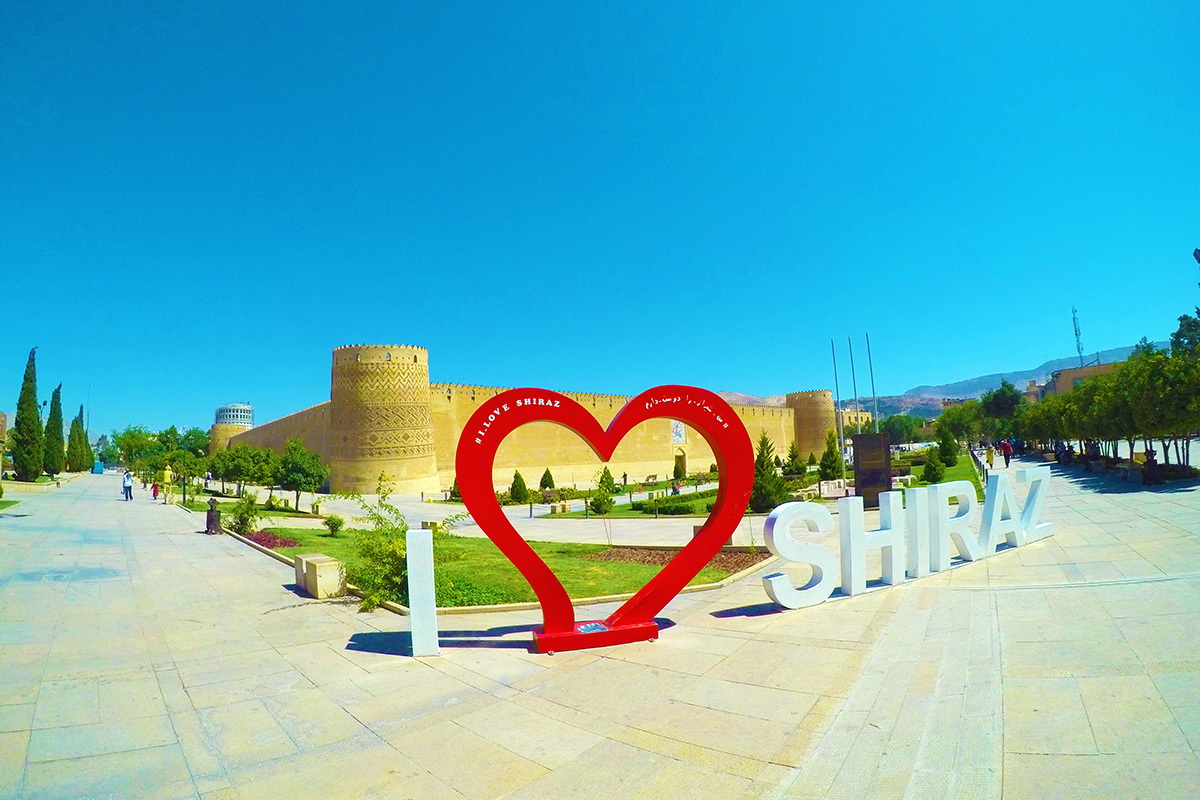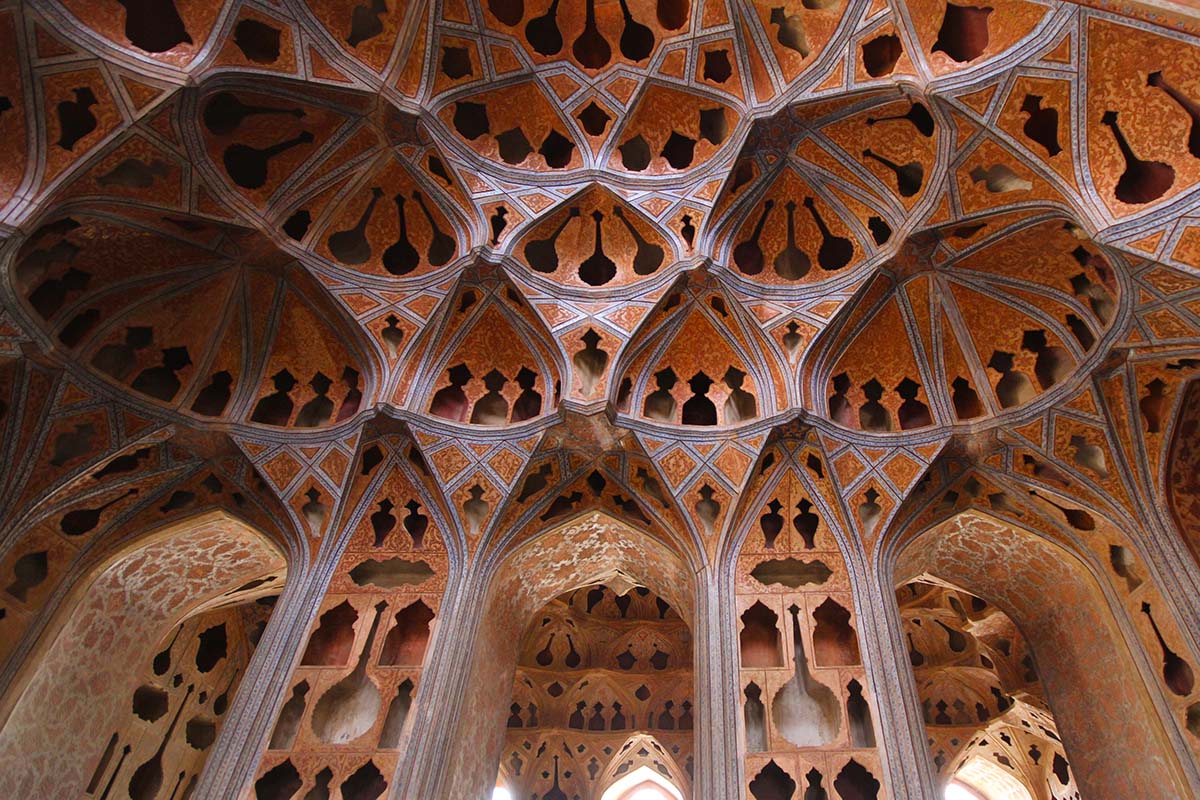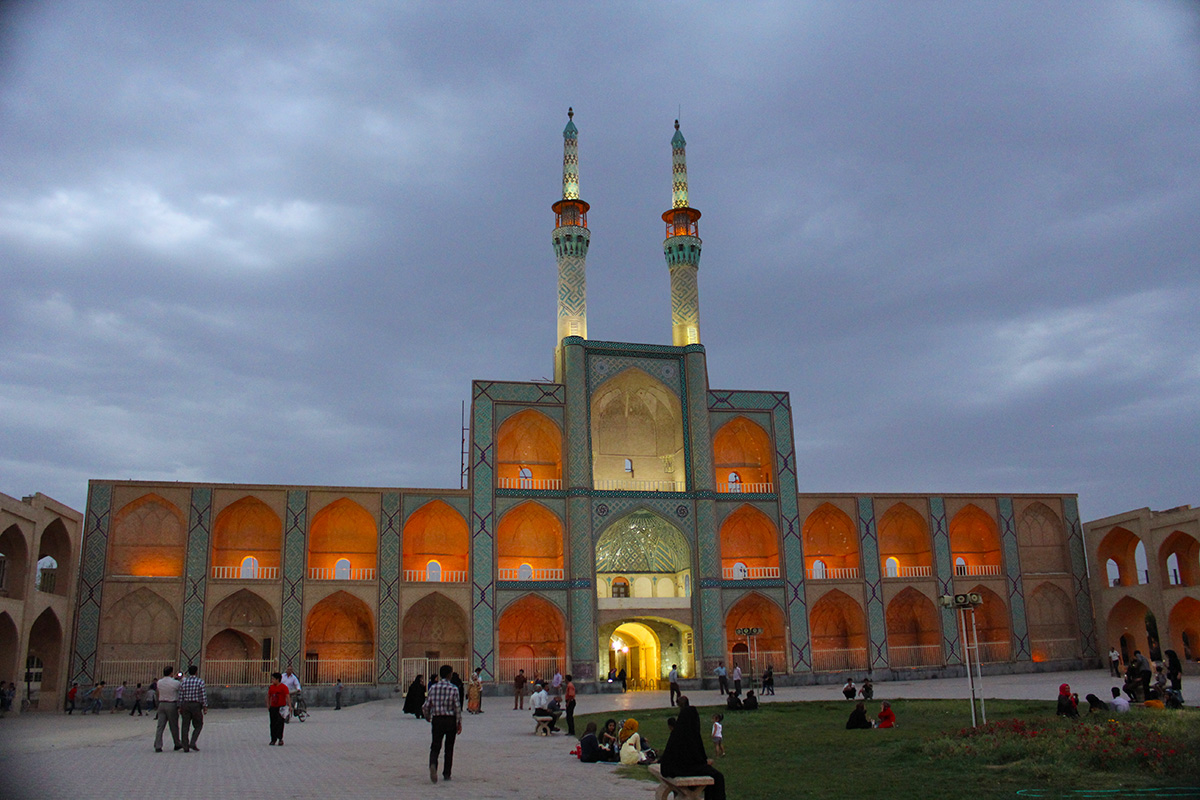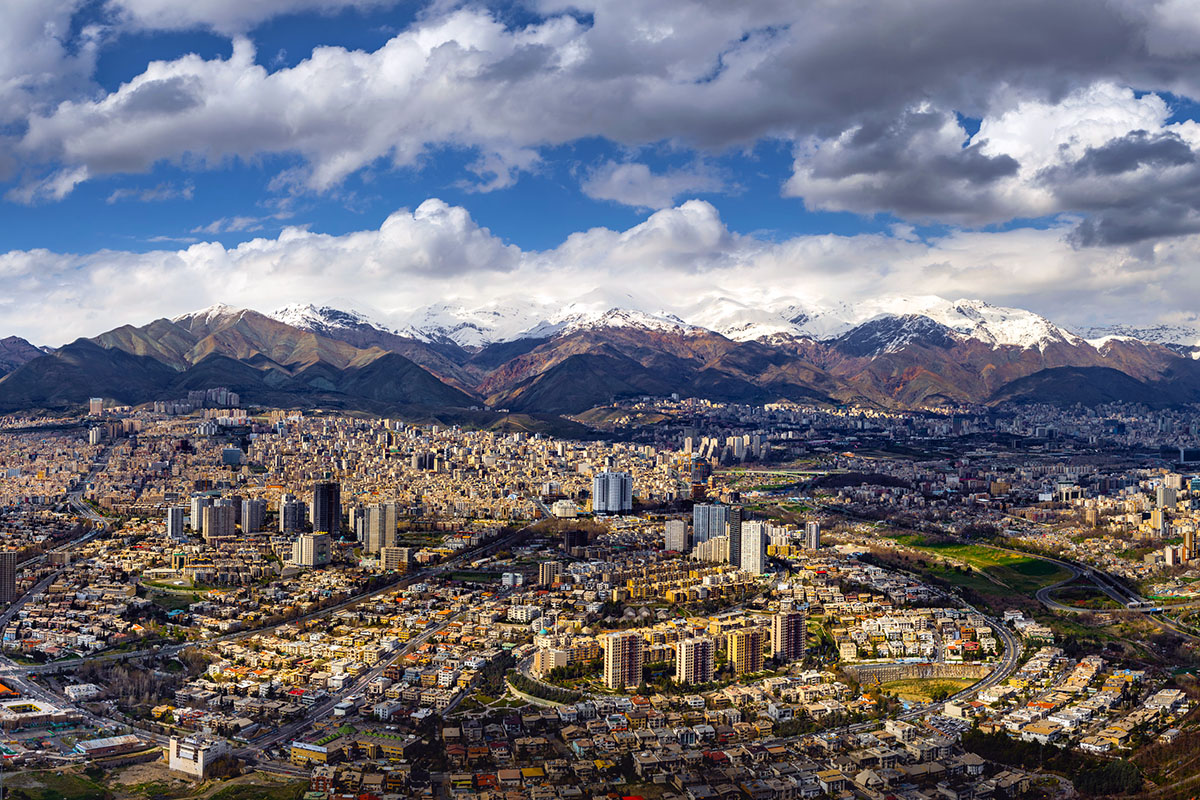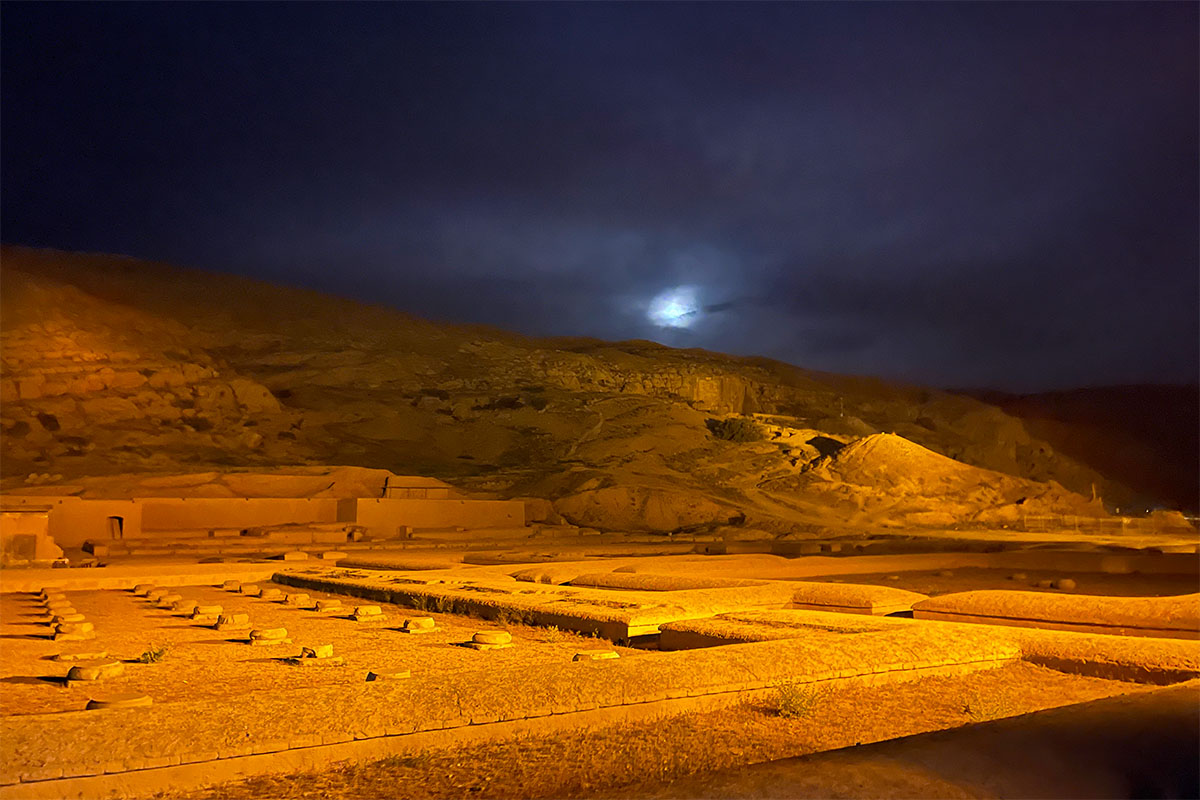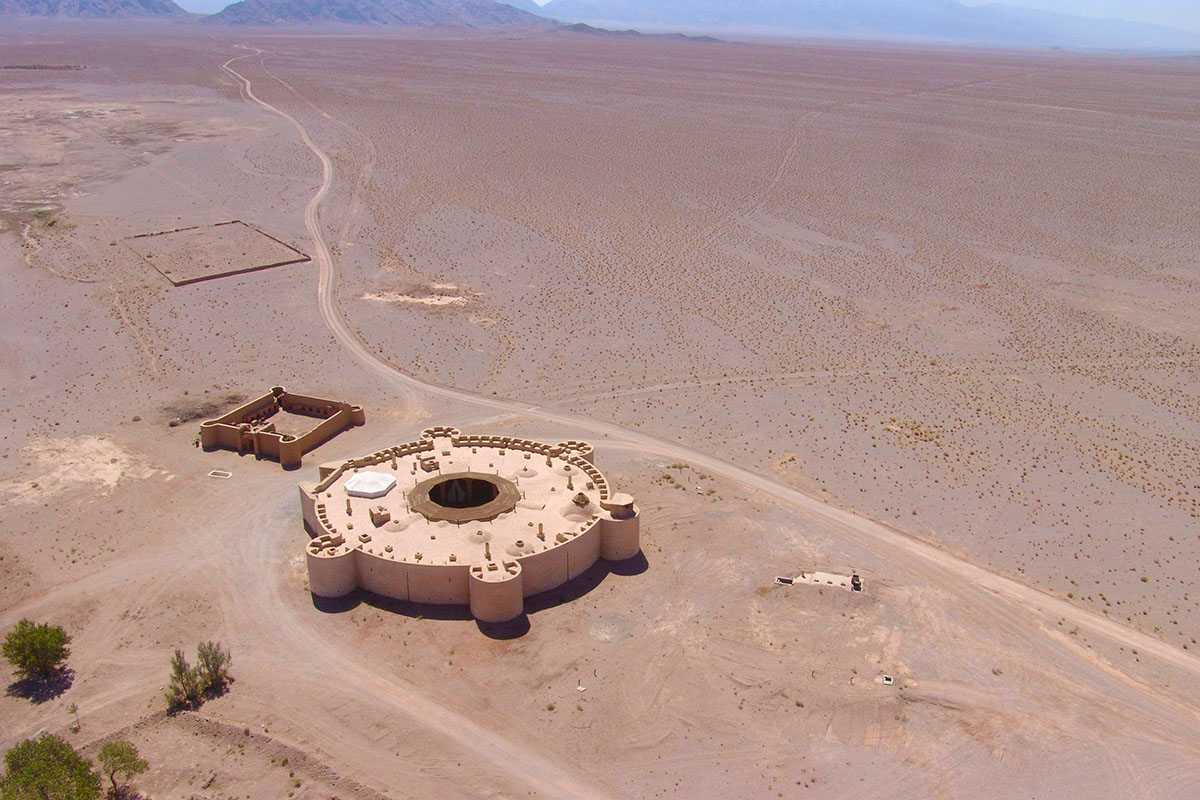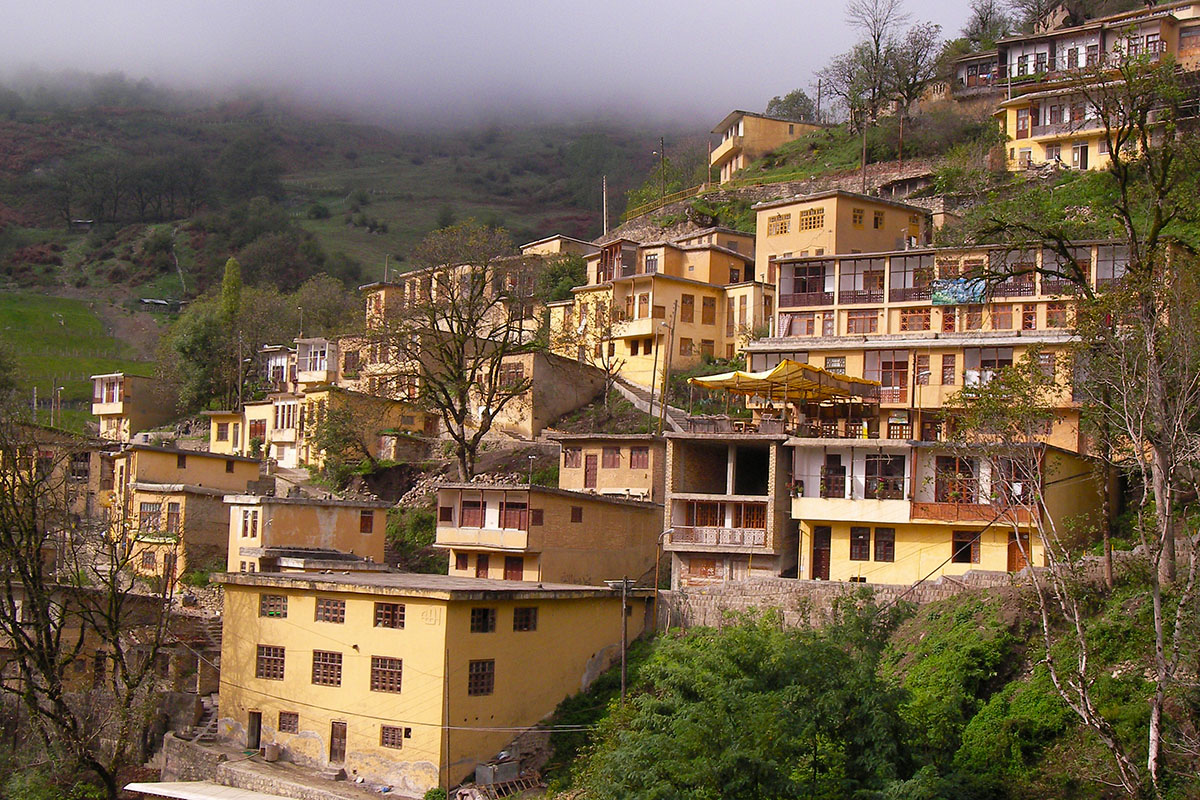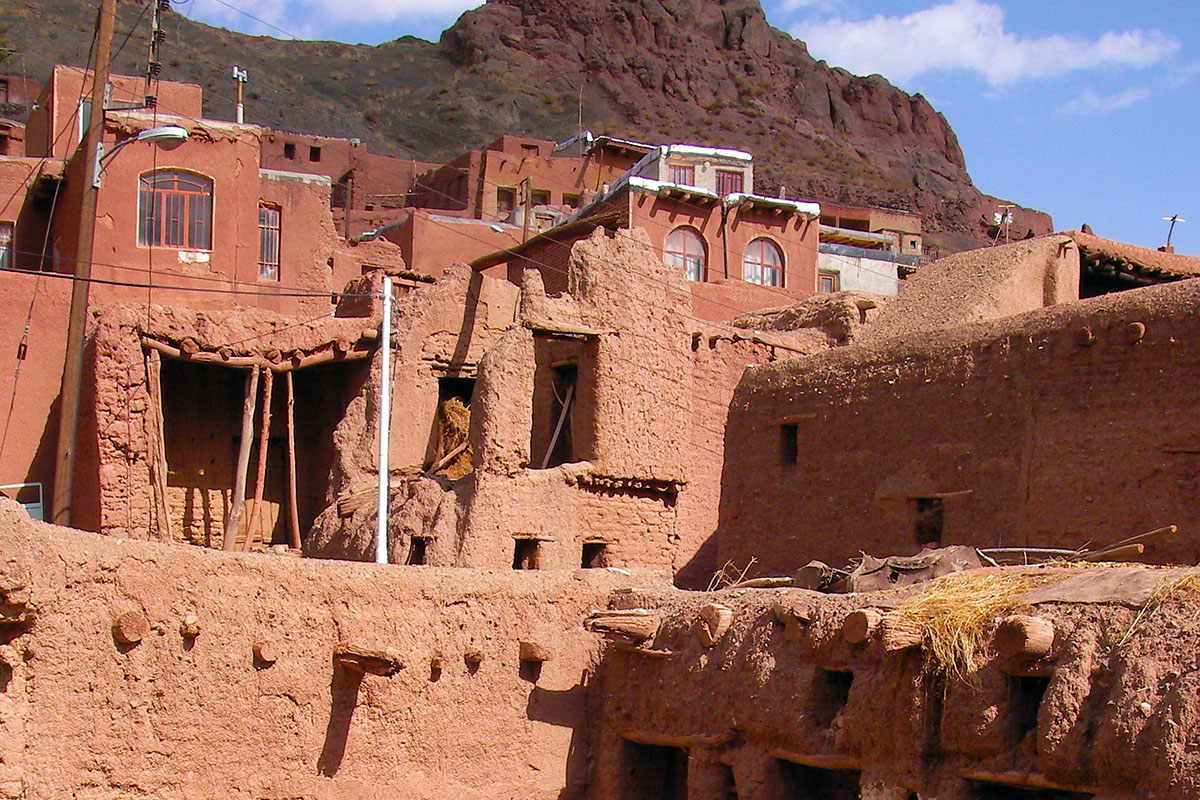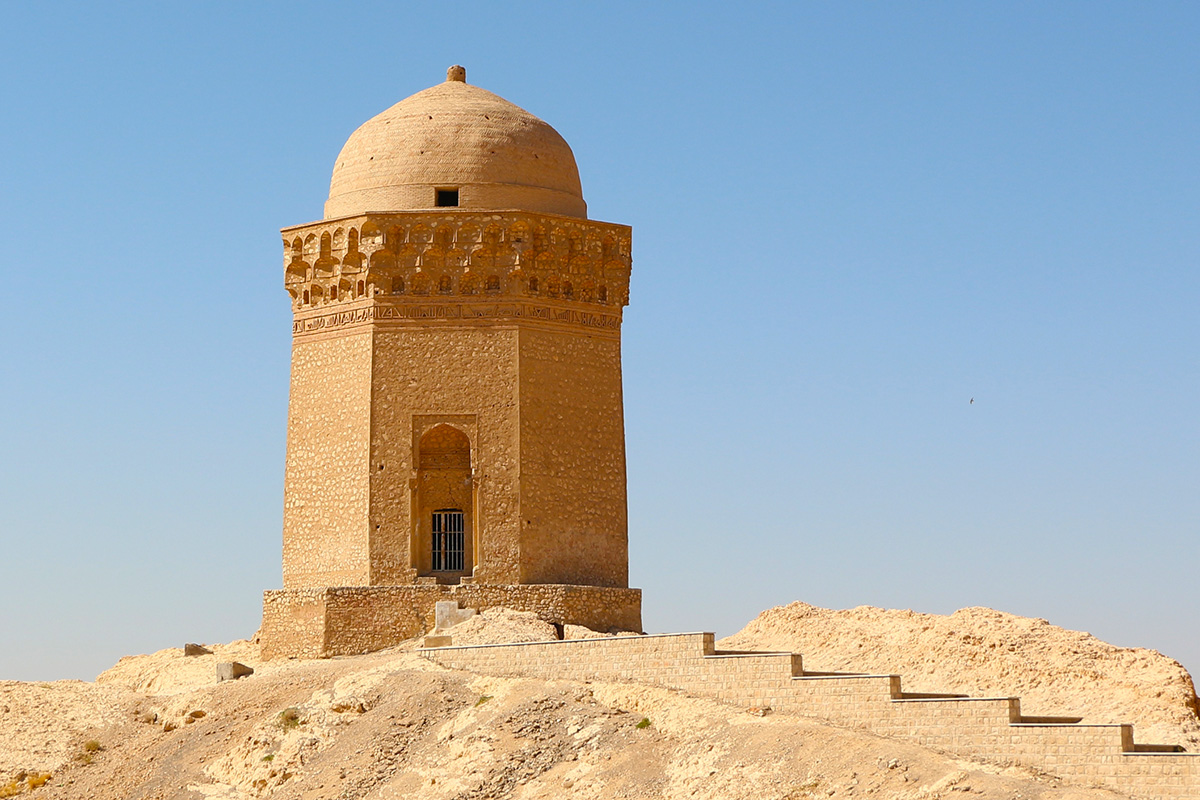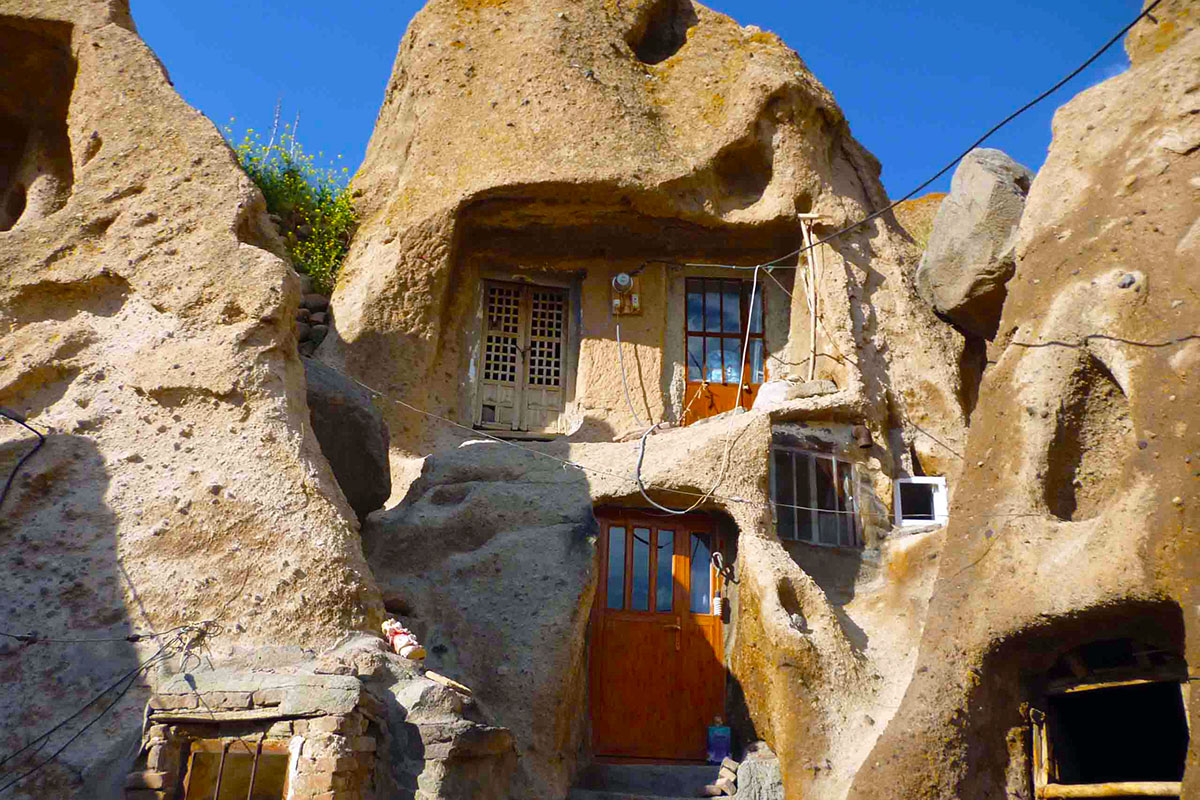Isfahan’s Economy
Esfahan is considered one of the major centers contributing to the textile industry, cotton, wool and silks and further products such as carpets, food stuffs, steel and handicrafts. The city is a trade center of agricultural products such as grain, tobacco, cotton and rice. The economy of Isfahan relies on its active pioneers in nanotechnology, biotechnology and nuclear technology and its great industrial resources at national level such as Refineries, Petrochemical and Aircraft industries.
Weather and climate in Isfahan
The climate is continentally dry and temperate with the modest daily temperature during summer and in winter temperatures rarely fall below freezing. In the summer months of June to August, the temperature may reach a maximum of 40ᵒC which is hot and semi dry and in the winter months of December to February, the temperature drops to 6ᵒC. In winter it sometimes snows but rarely settles more than few millimeters deep. The spring months of March to June have a moderate and pleasant climate. Blossoms and green forests of the province manifest the natural beauty in this season.Rainfall occurs in the fall and winter from September to December. It is similar to Denver, Colorado in terms of altitude and precipitation.
Isfahan: A living Museum
Visiting Isfahan is an unforgettable experience. This city contains the best collection of traditional architecture, and historical antiquities date back to thousands of years .Visitors will discover impressive domes, tilled walls, wall painting and calligraphy. Theses monuments show spectacular views of Isfahan which bring joy to visitors.
Transportation
BUS
VIP buses are quick, convenient and a safe way to travel. In addition, there are plenty of great landscapes to be seen along the way. VIP buses have had many improvements in recent years, such as more frequent services and improved accessibility. It takes approximately 6 hours to reach Isfahan from Tehran (435 KM) by bus. The greatest changes to the road trip have started recently and expansion of the highway is apparent. There is a highway from Tehran and Shiraz to Isfahan which has reduced the road accidents and increased the safety of the road transport. It is easy to get around Isfahan using public buses which are cheap and convenient.
Airport
Unless you are up for a 6 hour bus ride from Tehran or Shiraz to Isfahan, you will most likely be flying to the International Shahid -Beheshti Airport, the main airport in Isfahan. Daily domestic flights are available to most cities such as Mashhad, Tehran, Shiraz and Abadan. Shahid-Beheshti airport also has International flights to Dubai, Kuwait, Bahrain, Oman and Istanbul. The advantage of this airport is its short distance to most urban areas.
Train
Due to its major industrial and economic potential, Isfahan province has joined the railway network. There is no need to worry as visitors can reach their hotels quickly.Televisions and mobile phone charging can be handled inside the train.
Availability of transportation stations
- Baggage
Storage service is available
- Wheelchair
Access to the train and bus stations.
Wireless Internet:
WIFI Internet is accessible in the station.
Cultural attractions
Ethnic arrangement
Different states of Isfahan have different official languages but the most popular languages spoken in Isfahan are Farsi, Lori and Armani. Lori dialect is between Kurdish and Farsi and is commonly spoken in western and southwestern parts of Iran such as Kohkilo-And-Boyer Ahmad and Isfahan. Bakhtiyari tribes with Lori dialect are the oldest Iranian nomads have settled in Zagrous Maountain Ranges and near Karoun River from 6th century BC and now they are mostly living near Isfahan.
Isfahan Art
Native Isfahani arts and crafts
Handcrafts and art industry represent culture, tradition and creativity of the people of Esfahan. Miniature painting, carving, mosaic and silver beads, chain weaving, carpet weaving, and textile crafts are traditional arts which flourished in the Safavid era. It is highly recommended that visitors make time to view the beautiful native arts and crafts.
- Miniature paintings
These special arts are greatly admired and praised for their texture and innovativeness. They are pictures of ancient and illuminated manuscripts which are mostly painted on camel bone.
- Inlaid art crafts
These consist of objects with small wooden triangles in regular geometric forms. Inlaid art works in geometric patterns are composed of triangles made up of ivory, camel bone, wood, brass and wire. Many products such as picture frames, jewelry boxes, cigarette boxes, pipes and album covers are decorated with this intricate inlaid work.
- Pottery
Shahreza in Isfahan province is the main place of pottery in Iran and its products attract many customers. The design of ceramics is mostly flowers and fishes.
- Weaving
Persian carpets go back 2500 years and have a rich culture behind them. There are of two types: nomadic and city woven carpets.Tribal and nomadic carpets which are made by Iranian nomads have an improvised geometric design and asymmetric pattern made with organic colors. City woven carpets can be made of thread, silk and wool in a different pattern based on a weaver’s style. Today, most designs of new carpets include Lachak forms, flowers, shahabbasi, prayer, trees and hunting.
Silk Isfahan carpets
One of the most expensive carpets in the world belong to Iran, and is the silk carpet of Isfahan. The outstanding craftsmanship, high knot density and use of pure silk make them unique. These carpets have a high decorative value with striking colors and elaborate patterned designs. They are one of the main crafts which has an important economic aspect too. In the Safavid era, Isfahan was one of the main carpet centers. There are some shops in this city where carpets are woven in a golden texture.
Firouze koobi
This is one of the few crafts that has no historical record, with limited production except in Isfahan. Firozekoobi is used in jewelry, dishes such as plates, cups, bowls and shakers.
Felting
Felt is the oldest textile fabric dates back to 6300 BC and has its origin in the Neolithic period. It is created from wool or other animal fibers that are densely matted together. In Asia, particularly in Iran, this nonwoven fabric has been used for yurts, rugs, hats, boots and clothing since 16th century. Felt making largely belongs to nomads communities including Qashgaees, Bakhtiyari and Arab Jarghoye who mainly live in Fereydonshah ,Semirom, chadegan and Shahrreza among which, Semirom felting is very famous .
Food and Drink
Famous Isfahani food and sweets
Every country has special food that seems strange to outsiders. You can find an excellent range of ethnic dishes and desserts for all palates in Iran.
- Biryani
When it’s time for lunch, passing through one of the streets bordering the Zyandehrood River, it isn’t surprising to see a long line of people in front of a grill cook preparing Biryani,
- Khoreshte mast
It is one of the most delicious Esfahani food which can be used either as a main dish or complement. However, due to its sweet taste, it is usually served as a dessert. It is made up of meat, yogurt, saffron, and sugar topped with barberries almonds or pistachio slices.
Sweets
- GAZ
It is a type of taffy made with honey or sugar, almonds, walnuts, egg white and water.
- Doogh and Gooshfill
Don’t forget to try some.
Tourist attractions in Isfahan
Naghshe-jahan square
Grand Naghshe-Jahan is the second largest square in the world and was built in the early 17th century. It is located in east Chaharbagh park as a feature of the Safavid period and is surrounded by several fantastic monuments such as the Mosque of Shahabbas (south side), Sheikh Lotfollah Mosque (east side), Ali Qapu building (west side), and the entrance of Casara (north side). Sunrise and sunset can be observed in a beautiful atmosphere and is famous as a honeymoon destination. It was a lush and pleasant garden during the Safavid period and was restored and renamed. Imam Square after the Iranian Revolution of 1979. It has become a focal point of Isfahan with a four central elements of social and cultural structure including science, religion, politics, culture and economics in the form of superb monuments and special architecture. Carriage rides are an integral part of Imam Square and a reminder of the Shah Abbas era. In the past, a traditional Iranian polo game (Chogan) was played in this square.
Isfahan Mosques
There are so many beautiful mosques located in Iran, especially in Isfahan, which look stunning from the outside and have breath-taking interiors.
Imam Mosque
Imam or Shah (King) mosque presents the rich history, art and culture of Isfahan city with elaborate architecture typical of Persian Mosques. Its decoration dates back to a Buwayhid period. Ancients believed that the mosque had previously been a temple. The reflection of sound in the southern part of the dome is an interesting point of Imam mosque. It has exquisite tile work which was constructed in the early 16th century. Yard corridors, niches, brilliant inscriptions and seven colored tiles which are covered with marble and golden themes are incredible to see. Rather than the curved statues which represent the Christian church, Imam Mosque contains a decorative design in scripts and fabulous finials with visible inscriptions praising God.
Masjed-Jame
Jame mosque or Friday mosque is the grand mosque of Isfahan. It was built by Seljuq ruler, Malik Shah in 1072 and is the most excellent example of the four- Iwan court mosque. It was described as a stunning example of mosque’s architecture evolution over 12th centuries and is the oldest edifice of its type in Iran. There are four iwan halls leading off the open court mosque with four gate in front of each iwan. Behind the prayer hall, iwan is a spacious chamber supporting a fifty feet dome. Directly opposite at the north end of the mosque is a small dome, the Gunbad-e-Kharka which was built in 1088 and the grand bazaar of Isfahan is located at the southern part of mosque.
Sheikh Lotfollah Mosque
It is located on the eastern side of Naghshe- Jahan Square opposite the Ali Qapu building. The Sheikh Lotfollah mosque is one of the most beautiful historical monuments of Isfahan and a masterpiece of Safavid period architecture with no minarets, exquisite dome, festinating tile works and brilliant calligraphy which is one of the major Islamic art forms.
Ali Qapu palace
The building was originally built in Teimoorian period and it was repeatedly repaired and was mostly improved in its constructions during safavid era in 17th century. It is named so, because it was originally designed as the entrance to the safavid palace and means lofty gate. It stands 48 meters high, 7 floors with special decorations on the west side of Naghsh-e-Jahan square.
The king, Shah AbbasI spent most of his time in his favorite palace for performing important roles and dealing with current affairs, events and participating in private celebrations. The balconies are formed in an ideal place from which the royal family used to watch the fireworks, illuminations, exhibitions and the Polo games which took place in the square. The music hall is one the unique sections as is decorated with mural paintings and stucco works and also, are designed to reflect sounds in the room.
Chehel-sotun palace
The Chehel-sotun palace, an immense mansion was built in the early 11th century. It is the jewel of Persian art and was one of the admired masterpieces of Iran’s heritage in its time. The palace provides scenes from 400 years ago. Its area is about 67000 square meters and the large pool with tiled walls and painted decoration gives to its beauty. A reflecting pool and beautiful garden represents the finest architectural and artistic achievement through perfect harmony. The main mansion contains twenty slender columns supporting the pavilion which is named “forty columns” due to the reflection of the columns in the water of the pool. The entrance shows a geometric pattern with mirrors on the ceiling and inlaid works on the doors. Its grand halls indicate Shah (king), Lifestyle, Celebrations, Anniversaries and battles in the form of miniature paintings. A large painting of Karnal Battle was added during Nader shah Afshar’s time.
Hasht- Behesht Palace
Hasht behesht means "Eight Paradises" and refers to a Timurid palace building type consisting of two sections of four corner rooms around a central domed space which dates back to 1669 in the Suleiman Safavid time. The palace has an octagonal motif with eight entrances and four different unique faces. Corridors, rooms, and the central vestibule are decorated in various styles. French traveler Jean Chardin believed that due to the nightingales’ nest in the garden it should be called the Nightingale Garden. Problem with this review?The surrounding gardens and trees are a great setting so it is a very nice place to relax and enjoy the good weather. Lots of locals hang out here to relax in morning sun.
Khajoo Bridge
This is one of the oldest stone bridges over the Zayandeh-rood River which was built in 1650 for pedestrians to walk across and to participate in the king’s celebrations. Also, this structure served as a water dam. It is close to Khajoo district from which it takes its name and links the northern bank to the southern bank of the city. The bridge is about 150 meters long and 14 meters wide. Its passage is about 6 meters of stone and brick with 21 arches and 26 springs and is covered with decorative tiling and painting.
Shahrestan or Jey Bridge
Along the unique landscape of Isfahan, there are many old bridges which are the most historically brilliant aspects of Isfahan culture. The oldest bridge, Jey Bridge was built in the12th century during the Seljuq era and its history dates back to pre-Islamic times. It is located 4 km East of Isfahan and was mentioned as a war and military bridge during that time.
Si-o-se-pol Bridge - Bridge of 33 Arches”
Si-o-se-pol (Bridge of 33 Arches) which is also called the Allah-Verdi Khan Bridge was commissioned in 1602 by Shah Abbas the first The Bridge itself is 300 meters long and 13.75 meters wide and has 33 arches. The southern side of the bridge, where the waters of the Zayandehrood river flow more swiftly has supplementary arches which make them suitable as a teahouse. Armenian’s celebration has been held along the bridge every year.
Isfahan bazaar
The Isfahan bazaar has always been fascinating to visit. Iranian Market offers a wide range of items to choose from. It is historical and one of the largest bazaars in the Middle East. It is situated downtown Isfahan in the most northern section of Naghshe-jahan square. The bazaar has various branches with a main axis. At the entrance, there are several paintings at the top which represents the constellation. Famous carpets, spices, jewelry, paintings, gold, silver and handicrafts in different sections are exciting to visit.
Atashkadeh in Isfahan (Fire temple of Isfahan)
On the northern shore of the Zayandehrood River on the hill called Atashgah, there is an enigmatic firehouse which dates back to an ancient Iranian religion practiced before Islam. The origin of the Atashkadeh style can be observed in the Sassanian period and the building is made up of a large molds with clay mortar. Many temples were rebuilt as mosques after the advent of Islam in Iran. Zoroastrianism used to worship fire which was one of the four holy principles in their religion. Fire temple, as one of the blessed places in ancient times and due to its social position always attracts visitors’ attention.
Vank church
Vank church (The Church of the Saintly Sisters) is placed in one of the oldest parts of Isfahan called Jolfa which was constructed in a barberry garden. The church has a great dome, high ceilings and beautiful arches and is currently a vicarage for Armenians in Iran and India. The creation story of Adam and Eve which is depicted by Armenian artists can be seen around the central dome. A picture of Jesus Christ is painted in the center and an attractive giant bell made of stone that rests on four pillars is in the corner of the church. It is famous for its mural paintings and the world’s third best Armenian Museum is located in it. Also, there is a library at the corner of its yard with numerous valuable manuscripts which are considered the cultural heritage of the Armenians.
Monare Jonban
The most amazing monument was built in 14th century over the tomb of Sheikh Abdollah sogla, a hermit who was buried there. With an area of 146 square meters, the building contains two minarets, each of them has 17 meters height. The surprising point is that by shaking one minaret, the other one will shake in unison.

